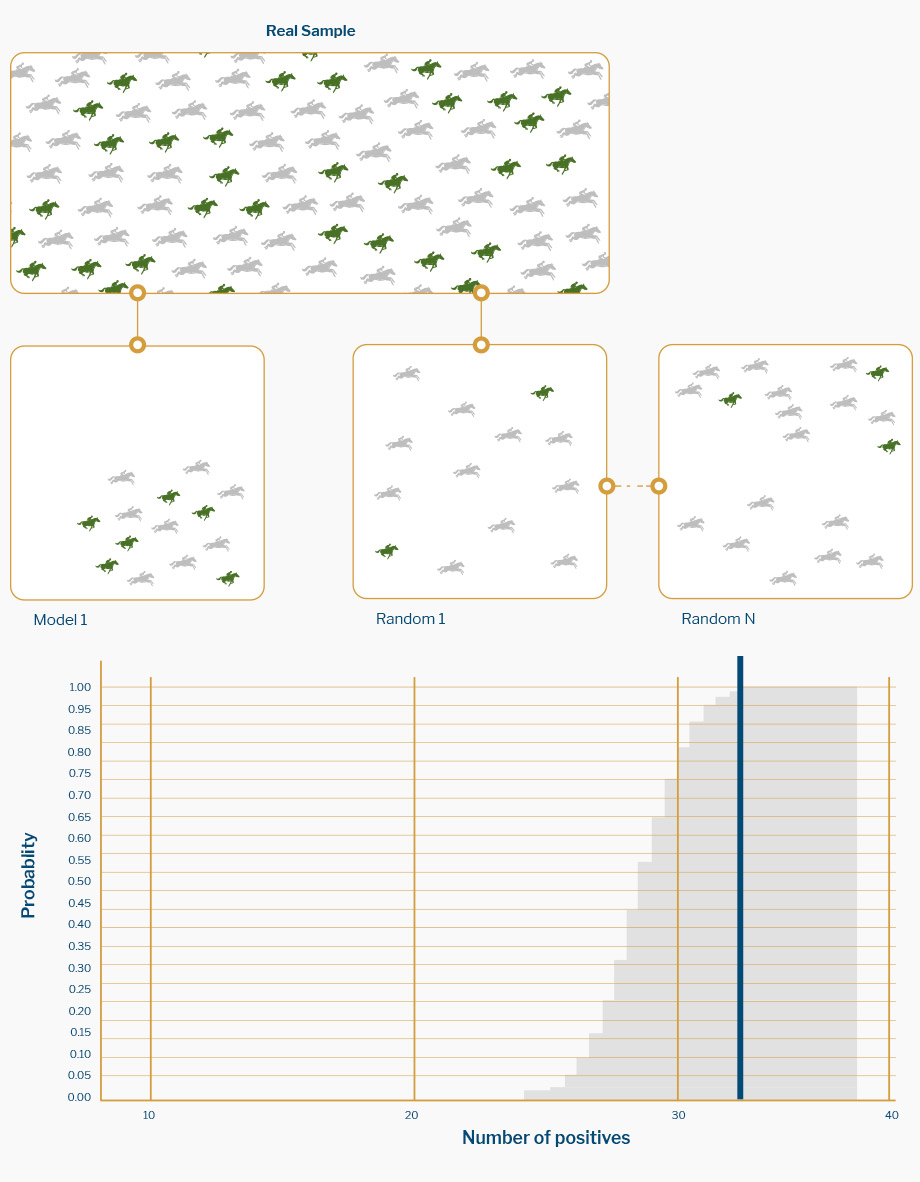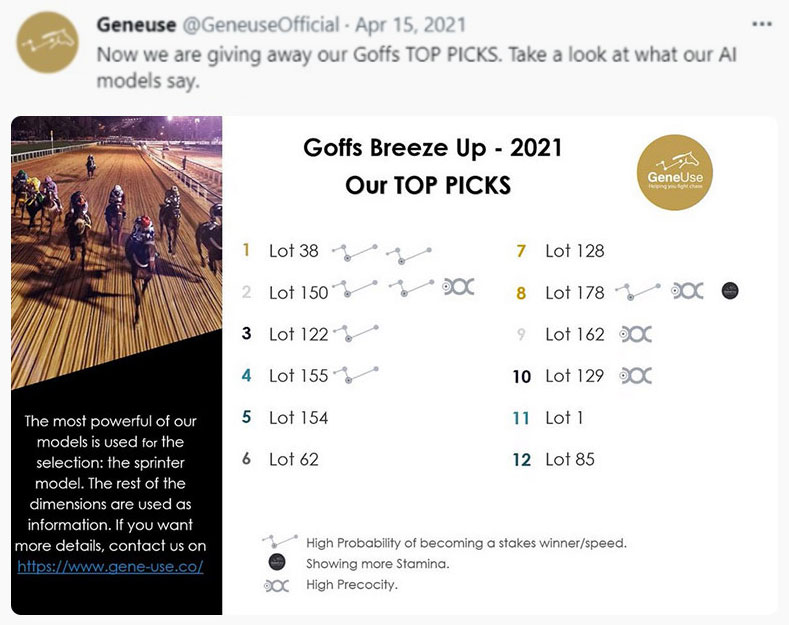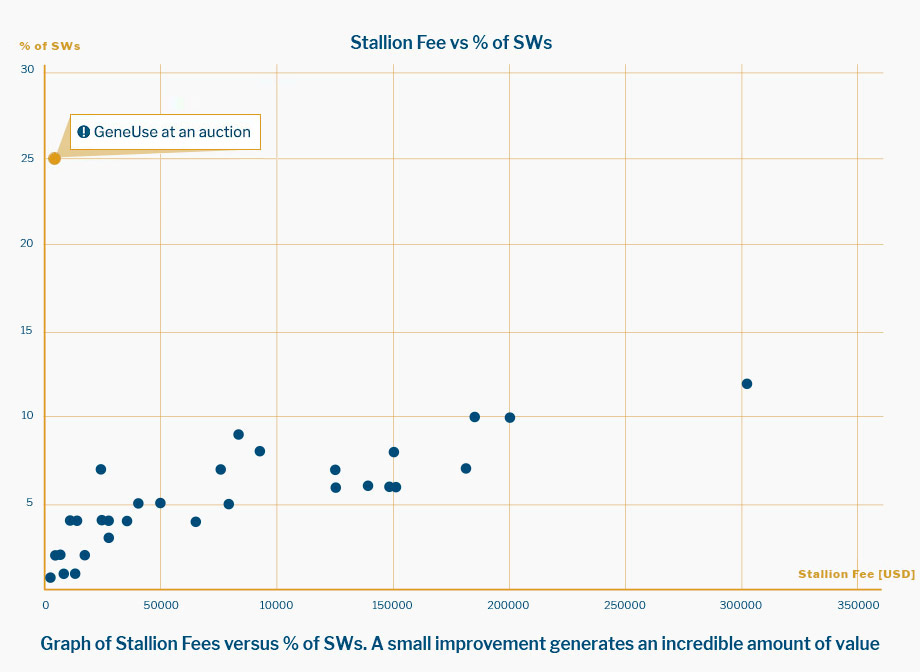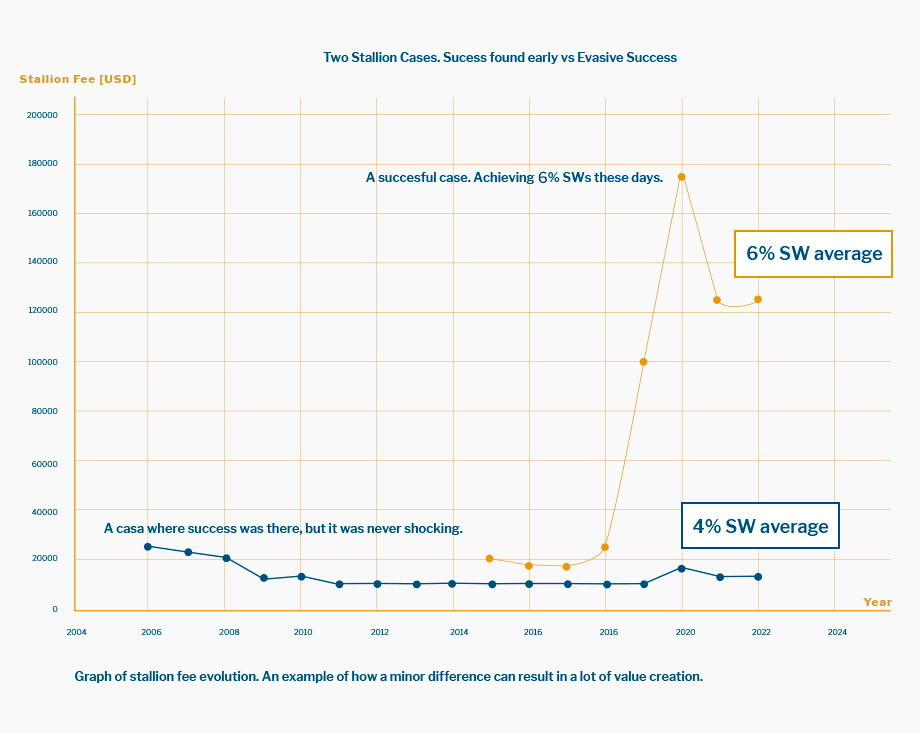

- Deep Learning looking at all interactions in the pedigree helping you choose the best horse.
- Validated Results. Two layers of validation + already even better results in real tests.
- Unique Approach.
We have said already that we help you choosing or breeding much better. But let’s go to HOW.
First, we built a database of horses with pedigrees, ratings, distances among other variables. Then, we put different models to learn (Artificial Intelligence Models) how to find high performing horses. After they learned, we tested them by comparing with random selection. What we see is that with a low threshold (this is equivalent to way above average on our reports) it beats the random at least by 50%-100% depending on the model (if you use a higher threshold, it gets better) and we have seen up to 650% improvement (this upper limit remains to be discovered.

Is that enough validation? No, we wanted to be sure, so we made another layer of validation, outside the Artificial Intelligence area. We used the bootstrap method. There, we tried to see how many times you can just be lucky and obtain the same success the models are getting. Were we lucky? The answer is no. The chance of us being lucky with the model selection and with the indicated threshold (it can be even better by being pickier) is below 1% for all models except one. For model 1 it is slightly worse. Why did we leave it then? We left it because for higher thresholds it delivers exponentially well.

These two layers guarantee that our system is reliable and robust. This way you are sure than a good result it is not only something nice, but also mathematically giving you more chances. No doubt about it. It is equivalent to paying more for a stallion that has delivered in the past, but orders of magnitude cheaper and even more powerful.
If you want to know how to make and test a report, this video explains it.
Have we tested this in reality? Yes, you probably already saw that on our video at the beginning of this page. Results are better than what we mentioned because we used a more demanding threshold and combined the models. During May 2021 we posted our picks for a group of breeze ups (Twitter and Instagram). Average amount of SWs (Stakes Winners) on those auctions was 1.5% (pretty low) and our selection went to 11.5% only in one season. Some winners didn't even run stakes races, so those numbers will improve. That means that in our first big test in reality, we delivered at least +650% in chances.
You can go to news and see some of the nice horses we recommended: Maglev, Gis a Sub, Papa Don’t Preach, Lucky Girl and other winners that will keep running through 2022 and 2023.
Let’s look in particular at the 2021 Goffs Breeze Up Sales. We posted this on Twitter, 5 days before the auction without seeing any of the horses. In fact, we used 3 models, not the 6 available now.

Lots 122, 178 and 122 have ORs over 100. In addition, 38 and 150 have 87 and 79 in timeform respectively.
As you can see, the  symbol meant those horses had more chances. Of the 5 marked with at least one symbol, 2 are over 100 OR: 40%! Which is the chance of that happening just by chance at an auction with 3% Stakes Winners? That can be answered again by choosing randomly 5 horses thousands of times (Bootstrap). The answer is 0.36%! So, yes, we were not lucky.
symbol meant those horses had more chances. Of the 5 marked with at least one symbol, 2 are over 100 OR: 40%! Which is the chance of that happening just by chance at an auction with 3% Stakes Winners? That can be answered again by choosing randomly 5 horses thousands of times (Bootstrap). The answer is 0.36%! So, yes, we were not lucky.
We have also made recommendations for Tattersalls Books 1 and 2 in 2021 and the Goffs Orby sale. We believe we will get really interesting numbers there. You will see the results in news when we get them.
If you want to know how to make and test a report, this video explains it.
Just think about what success rates make to stallion fees. Top stallions are barely over 10% but still charge in a range between 100000 USD up to 500000 USD. A stallion around 10000 USD is around 3% SWs on his progeny. Several of these numbers are shown below where some of the points are Dubawi, Frankel, Tapit, Night of Thunder, Footstepsinthesand, Speighstown, Acclamation, among others.
If we put a value to that chance increase based on the fee difference, GeneUse could be giving its users an advantage equivalent to hundreds of thousands of dollars per horse. In fact, it is clear when looking at the upper point representing GeneUse that we can give you more than the best stallion and at a ridiculous fee. Or in different words, a user with a restricted budget can have more chances than a non-user with millions of dollars available.

Just think about other possibilities: a Stallion owner might choose way better mares for crossing with his stallion. Imagine achieving 4 SWs instead of 1 in a first year. Imagine the effect of this after 3, 4 years as that early success will attract better mares and allow them to choose even better. The stallion fee could explode just because of using a proven tool. See graph below for an example of this.
Imagine a Mare having 3 or 4 SW in her breeding career instead of 1. Just picture a breeder doing something similar with all his mares and compounding that success through the years. His or her business could change drastically for the better.

Or you could go deeper: imagine an investor, buying thousands of reports to identify a stallion prospect that could work well in a certain area and with a certain group of mares.
Imagine a smart user using the full power of the tool converting his limited budget into something competitive against anyone.
Our tools can provide assistance to everyone in the thoroughbred supply chain. What are you waiting for?
If you want to know how to make and test a report, this video explains it.
There is an interesting approach than can provide users with an extra advantage. When a mare has produced horses already and performance is known, those horses can be checked. If there is correlation between reported results and real results, it means the mare delivers according to expectations. If there is a negative correlation, it means that the models cannot predict properly what that particular mare produces. GeneUse believes that this approach could take the chances to another level since it would remove much of the noise generated by genes and its natural randomness.
It is more time consuming, but for the standalone user making a final decision and comparing a small group of horses, it could be incredible.